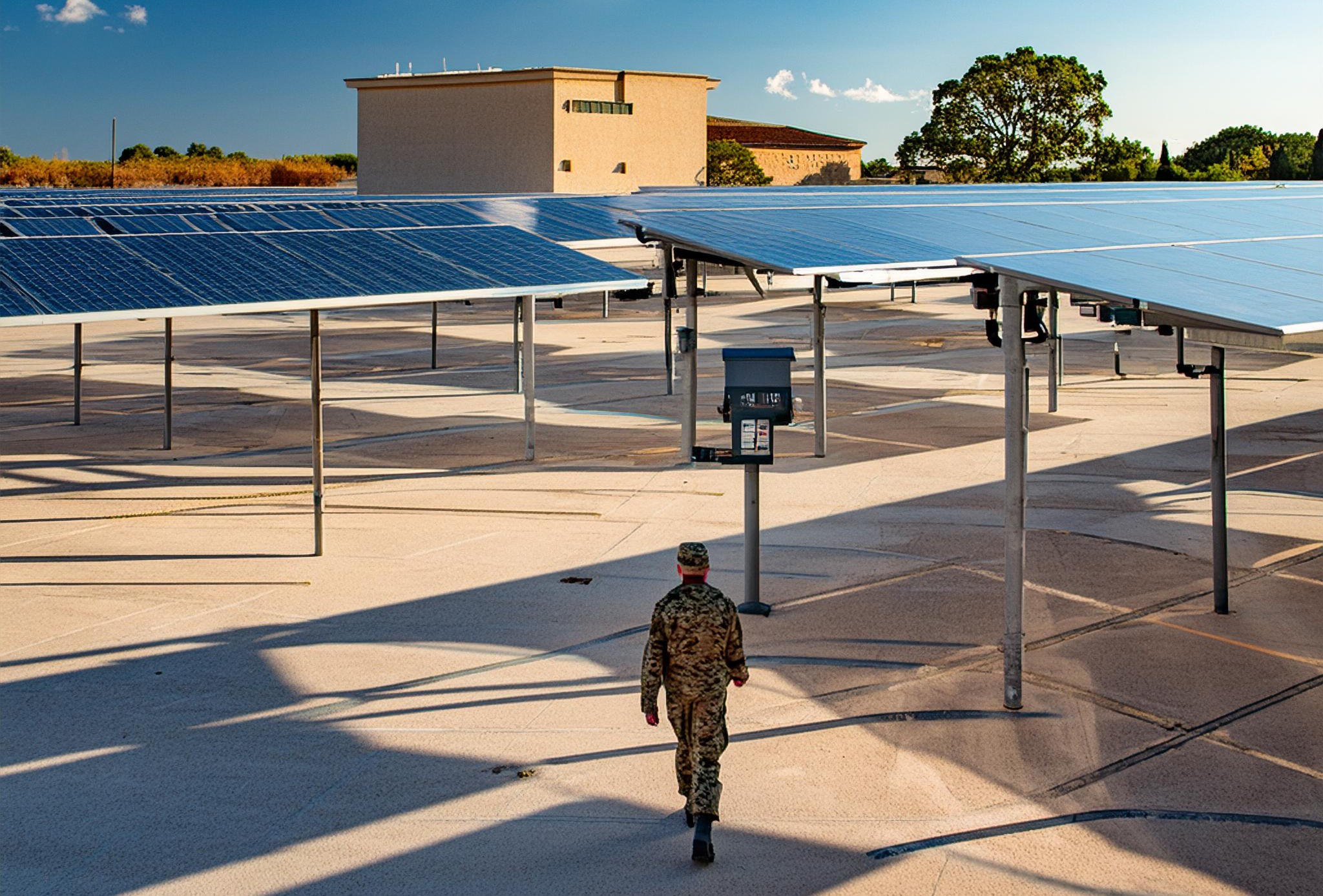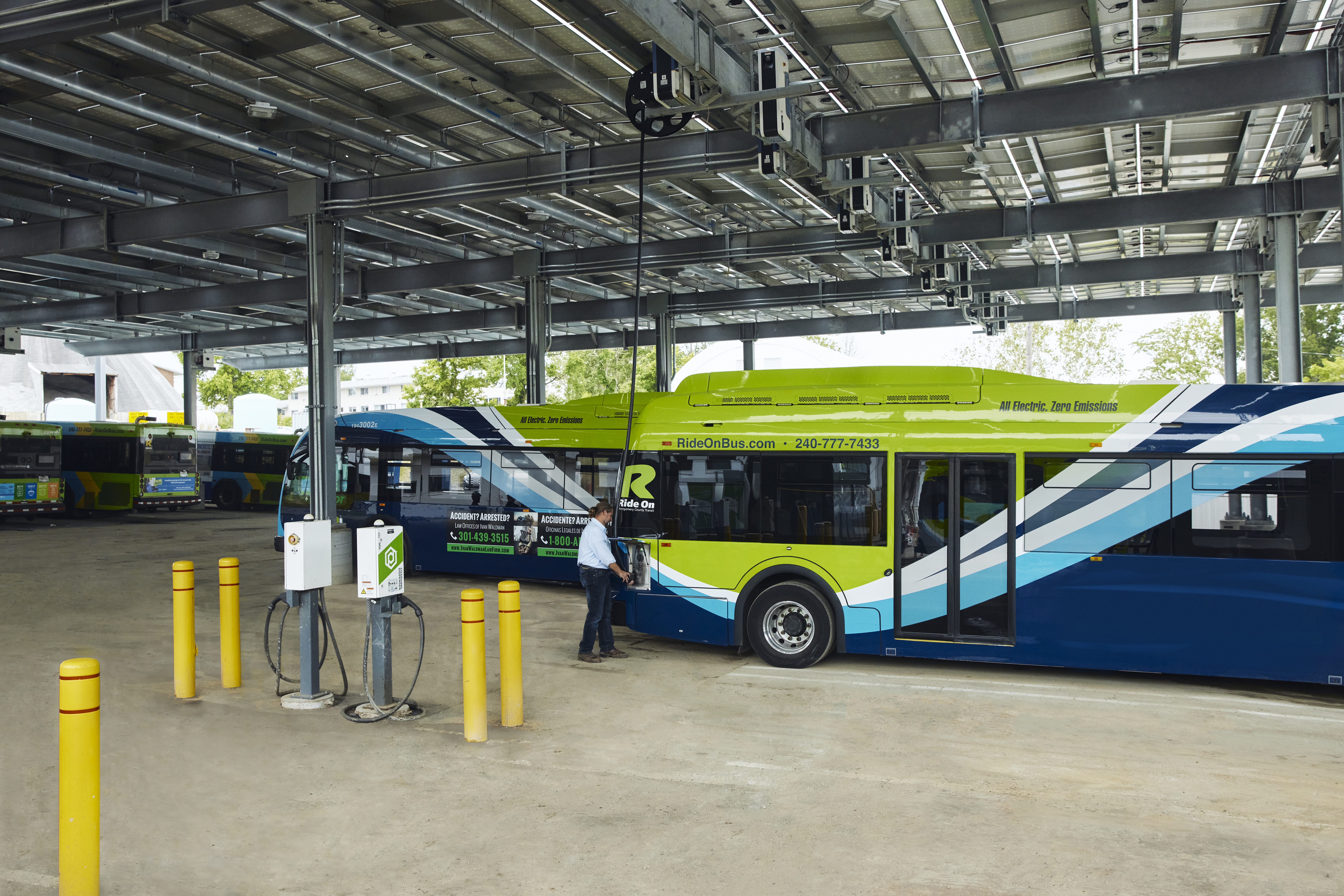It may be summer break, but school districts around the country are busy planning for the full return to in-person learning, including how to get students to and from school in electric buses. With pressure mounting to join the electric transition, schools also have to consider how to plan for increasingly frequent extreme weather events and power outages from climate change.
During the Texas energy crisis last February, for example, more than 130 buildings in the Houston Independent School District lost power and water, delaying both in-person and virtual classes and preventing the distribution of meals and other services for students.
According to the U.S. Department of Energy Better Buildings Initiative, K-12 school districts already spend nearly $8 billion annually on energy costs and need an additional $270 billion for infrastructure and maintenance repairs. With already constrained budgets, it’s important to arm school districts with the insight they need to make smart and strategic electrification investments. As school districts seek answers, there are a few myths to clarify:
1. The promise of future revenue enabled by vehicle-to-grid technology.
2. Going electric doesn’t mean you’re going green.
3. Government incentives and grants won’t cover all the costs in a meaningful transition.
Myth 1: The promise of future revenue enabled by vehicle-to-grid technology.
Many of the school bus electrification efforts to date are based on the assumption that revenue from services that will be enabled by vehicle-to-grid technology will help make these projects more economical. Vehicle-to-grid is the concept that the energy stored in the batteries of electric vehicles can be given back to the power grid when the vehicle is not in use. Electric school buses are regarded as a perfect fit for vehicle-to-grid since they are only used in the morning and late afternoon and not at all in the summertime, and therefore can be used as a grid asset during the day (assume charging occurs at night). In regions with astronomical summer energy demand, school buses could theoretically provide extra energy storage capacity to stabilize the local grid during summer break.
In reality, revenue for services provided by vehicle-to-grid interconnection won’t be readily available for another five to ten years. And even at that point, this capability will likely only make up a small percentage of revenue contribution to electrification projects. On top of that, you need a sizable, aggregated load to meaningfully impact supply and demand on the electric grid, and one school’s individual school bus fleet just won’t cut it.
Future revenue streams from vehicle-to-grid applications should not be used today to calculate the cost of school bus electrification projects, otherwise schools risk paying for the industry’s poor foresight.
Solution: Vehicle-to-building.
While vehicle-to-grid is potentially a decade away, vehicle-to-building technology can provide real savings and value today. With vehicle-to-building, the stored energy from electric school buses can be used to charge buildings during peak demand periods to save building owners on energy costs and reduce emissions. Electric school buses can easily be charged overnight and then be plugged into two-way chargers to discharge their stored electricity for use by the building in the middle of the day when buying power from the grid is more expensive. These savings can provide a significant lifetime return on electric school buses for school boards strapped for cash. This only makes sense if the energy use within the school district facilities and transportation is considered as a ‘system’ and not as stand-alone parts.
This functionality can also be used to power buildings in the event of a power outage to improve resiliency and ensure continued education and community services for students during emergencies. Vehicle-to-building can be accomplished with an onsite microgrid, a self-contained electric grid in which the school’s entire energy needs are provided.
Myth 2: Going electric doesn’t mean you’re going green.
There’s a misconception that simply switching to electric vehicles makes you ‘sustainable.’ If a school were to charge their electric buses from their local grid, the school is subject to the utility’s power mix. Today, many utilities still rely on fossil fuels for the majority of energy generation. Without sourcing renewable electricity for charging purposes, schools are missing out on the opportunity to drastically reduce emissions and contribute to a cleaner environment for future generations. Not to mention that renewable energy is now the cheapest source of energy.
Charging buses with utility power also exposes schools to unplanned outages, high escalators on electricity costs over time, and demand charges and time of use rates that can constrain how the fleet is operated.
Solution: On-site renewable energy.
Through the use of advanced microgrids incorporating on-site energy technologies — including solar panels, batteries, alternative fuels, distributed generation, and controls — schools can have their own dedicated source of sustainable and resilient energy to charge their buses. This approach ensures maximum operational flexibility for the fleet, in contrast to being bound by the utility’s generation supply and fluctuating costs.
The on-site infrastructure needed for school bus electrification is actually a lot smaller than one might think. Since school buses only travel about 50 miles per day, they use smaller batteries than other vehicles, which require less electricity to charge. This shrinks the scale of the overall project portfolio to a size that can be adequately managed by an average school.
Myth 3: Government incentives and grants won’t cover all the costs in a meaningful transition.
School bus electrification has entered the mainstream with the introduction of The American Jobs Plan, which proposes electrifying at least 20% of the national school bus fleet with an investment of about $20 billion over five to eight years. The Clean Commute for Kids Act was also recently introduced in the House and the Senate, which would provide $25 billion over the next ten years to electrify school buses.
Truthfully, the public funding that has been earmarked for school bus electrification to date is just a drop in the bucket. These types of grants and incentive programs are most beneficial to schools when they’re used to unlock private sector capital. There are faster, more affordable options available out there than stacking multiple grants and extending the transition time over a period as long as 10 years.
Solution: Public-private partnerships.
School boards, like other public fleet owners, can affordably procure on-site microgrids and charging infrastructure by creating a public-private partnership with a third-party Energy-as-a-Service (EaaS) provider.
For example, AlphaStruxure, a provider of customized EaaS solutions, is developing an integrated fleet electrification infrastructure project to support Montgomery County, Maryland’s, growing electric public bus fleet. The project integrates solar panels, on-site generation, battery energy storage, microgrid controls, delivering sustainable, reliable, and resilient energy and charging infrastructure for 44 electric buses. Through an EaaS agreement, AlphaStruxure will design, build, finance, own, and operate the project at no upfront cost to the county.
EaaS can provide a comprehensive solution for school bus fleets transitioning from fossil fuel to zero-emission alternatives. EaaS delivers the necessary energy capacity, ensures that energy is resilient and sustainable, and eliminates the upfront capital cost and risk of deploying and operating infrastructure.




